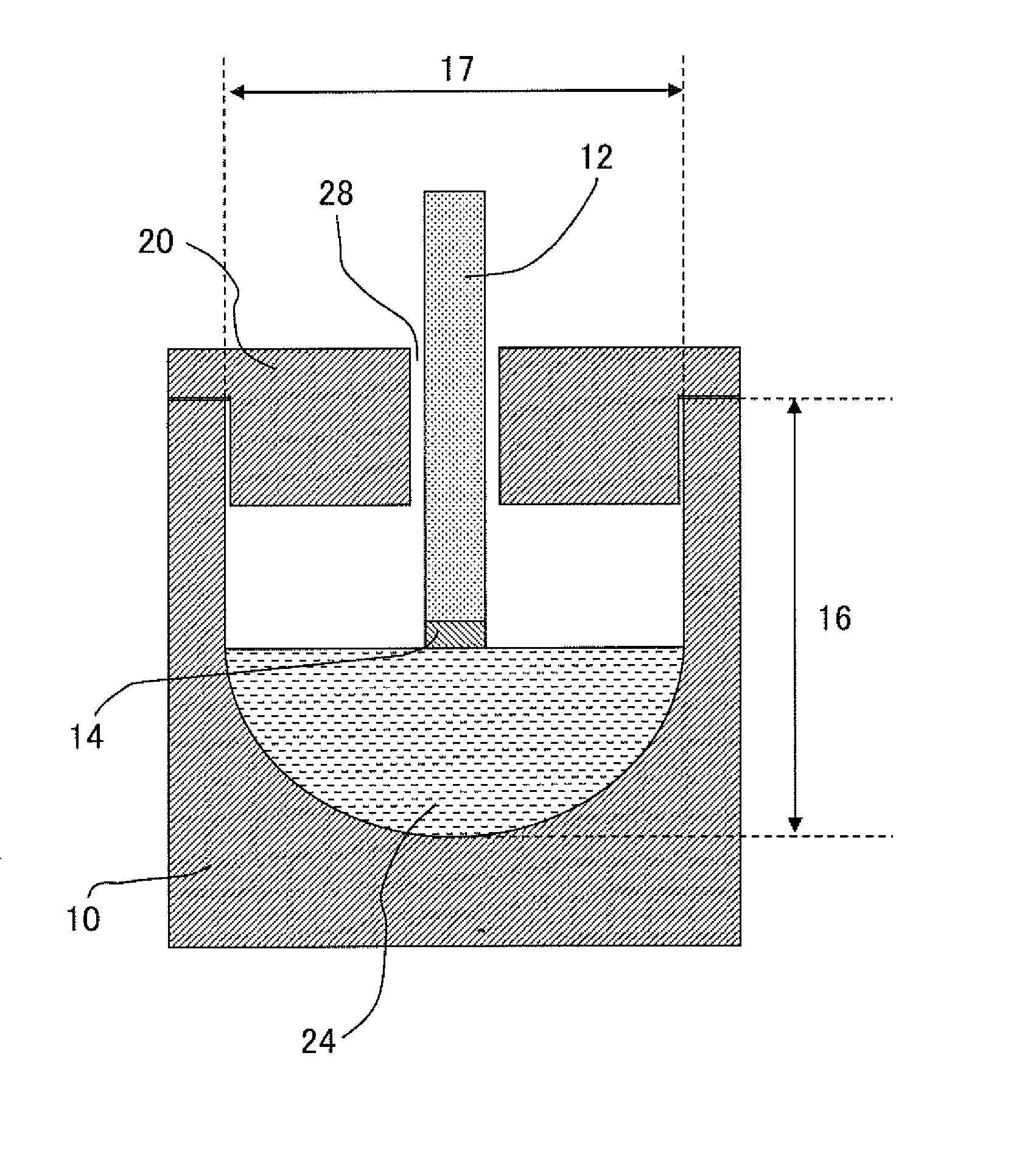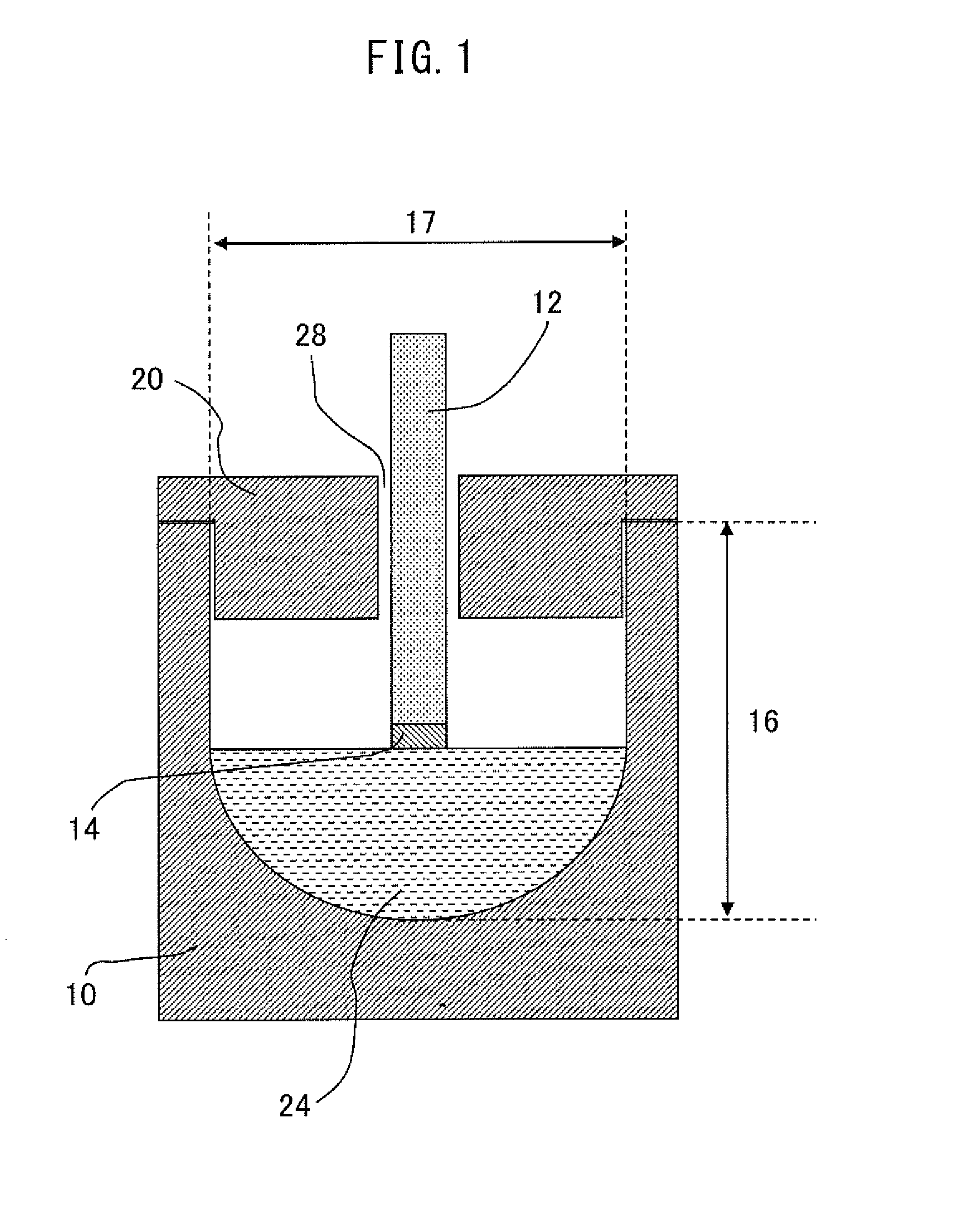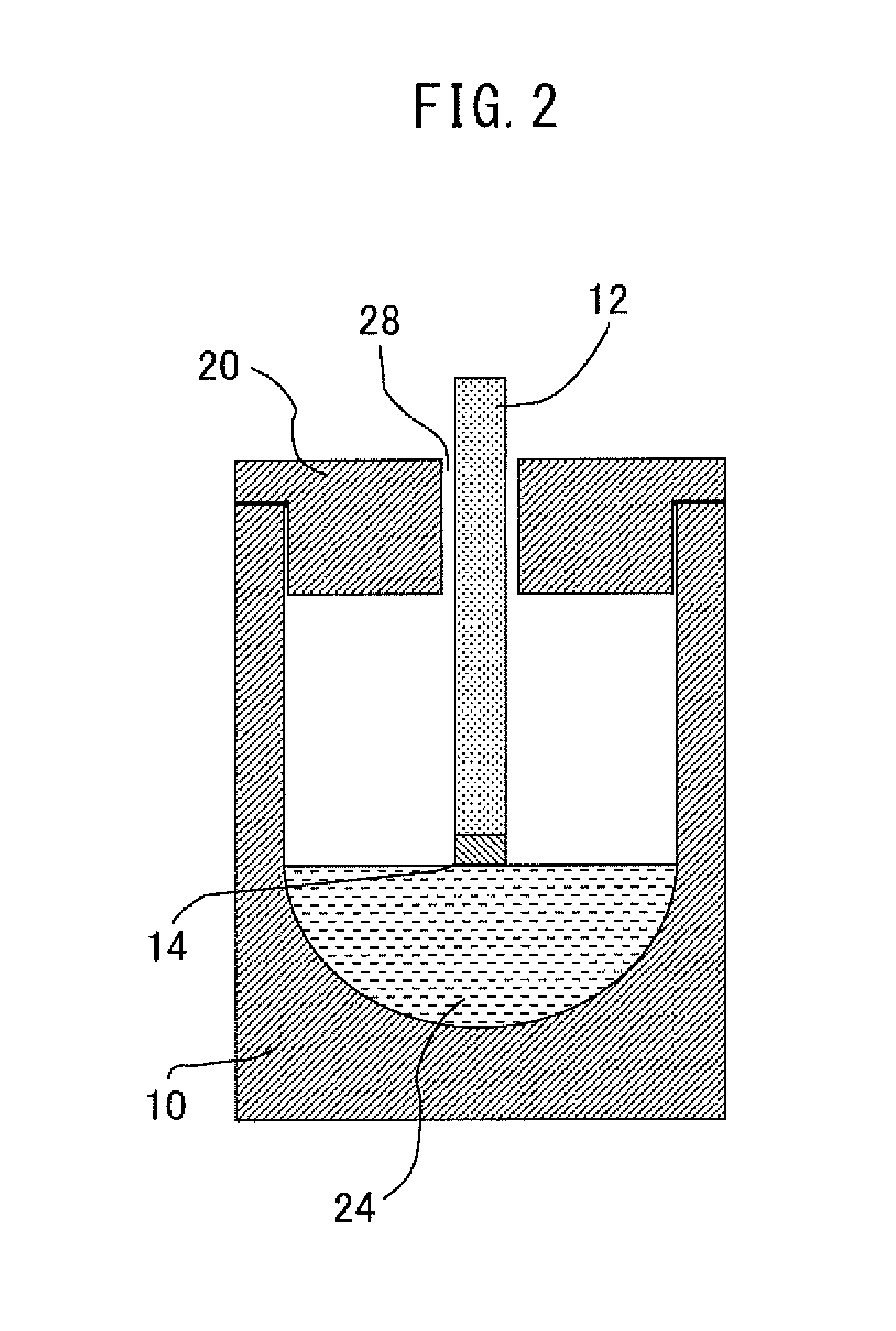Method for producing sic single crystal
- Summary
- Abstract
- Description
- Claims
- Application Information
AI Technical Summary
Benefits of technology
Problems solved by technology
Method used
Image
Examples
example 1-1
[0083]The single crystal production apparatus 100 shown in FIG. 6 was used for growth of a SiC single crystal. In a graphite crucible 10 with a depth of 80 mm and an inner diameter of 70 mm (crucible depth / crucible inner diameter=1.14) holding a Si—C solution 24, in which Si / Cr / Ni in an atomic compositional ratio of 54:40:6 was charged, as a molten liquid starting material. The air in the single crystal production apparatus was exchanged with argon. A high-frequency coil 22 situated around the periphery of the graphite crucible 10 was electrified to melt the starting material in the graphite crucible 10 by heating, thereby forming a Si / Cr / Ni alloy molten liquid. A sufficient amount of C was dissolved into the Si / Cr / Ni alloy molten liquid from the graphite crucible 10 to form a Si—C solution 24.
[0084]The outputs of the upper level coil 22A and lower level coil 22B were adjusted to heat the graphite crucible 10, forming a temperature gradient in which the temperature decreased from th...
example 1-2
[0093]A SiC single crystal was grown under the same conditions as Example 1 to evaluate the reproducibility. It was confirmed that a SiC single crystal growth rate of 1.92 mm / hr was obtained, and a grown SiC single crystal had a dislocation density equivalent to that of the seed crystal substrate and contained no inclusions, throughout an 8 mm diameter range.
example 2
[0094]Crystal growth was carried out under the same conditions as Example 1, except that the crucible was positioned 1 mm below the position of the crucible in Example 1 while keeping the temperature of the liquid surface level of the Si—C solution at 2000° C., and a temperature gradient of 50° C. / cm was formed between the liquid surface level of the Si—C solution and a location at a 10 mm depth in the vertical direction from the liquid surface level of the Si—C solution 24 toward the interior of the solution. The growth rate of the SiC single crystal was 1.72 mm / hr.
[0095]Inclusions in a grown crystal were observed and the dislocation density was measured, in the same manner as Example 1. It was confirmed that a grown SiC single crystal contained no inclusions and had a dislocation density equivalent to that of the seed crystal substrate, throughout an 8 mm diameter range.
PUM
 Login to View More
Login to View More Abstract
Description
Claims
Application Information
 Login to View More
Login to View More - R&D
- Intellectual Property
- Life Sciences
- Materials
- Tech Scout
- Unparalleled Data Quality
- Higher Quality Content
- 60% Fewer Hallucinations
Browse by: Latest US Patents, China's latest patents, Technical Efficacy Thesaurus, Application Domain, Technology Topic, Popular Technical Reports.
© 2025 PatSnap. All rights reserved.Legal|Privacy policy|Modern Slavery Act Transparency Statement|Sitemap|About US| Contact US: help@patsnap.com



